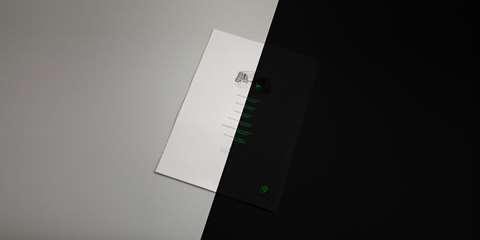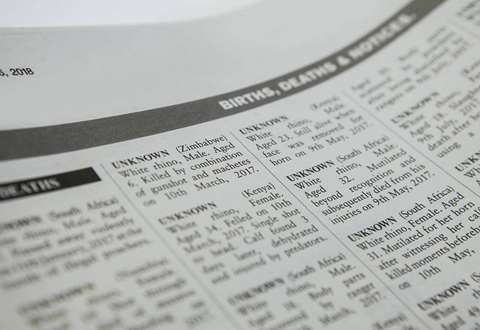The power of print at a glance
- The emergence of new tools and currencies means marketers are beginning to frame new and old media as complementary rather than competitive mediums
- Partitioning digital and non-digital roles and departments doesn’t reflect the rich diet of the modern consumer
Not long after Mark Read was appointed CEO of WPP, Sir Martin Sorrell’s successor tasked his leadership team with surviving an afternoon before the board without uttering the word ‘digital’. None passed, and though the challenge was set with tongue firmly in cheek, it shows how firmly the ‘d-word’ has penetrated the marketing lexicon.
In times past, the digital disruption narrative has framed print media and other traditional modes of communication as somehow less effective or creatively inferior to their digital counterparts. And doomsday sayers would flaunt reports of declining print readerships and ad revenues as supporting evidence.
Even today, marketers all too often adopt a binary outlook – one where they categorise media as new or old, brand or response. But the realisation that digital and non-digital are complementary, not competitive channels, is tearing down digital silos and establishing a place for print media in the marketing mix.
Breaking down silos
“We’re in a tricky world where people are partitioning digital and non-digital,” says a defiant Ian Gibbs, director of data leadership and learning at JICMail, the new media planning currency for ad mail currently numbering over fifty subscribers. “The sooner client marketing teams lose the word digital, the easier things will become.”
Digital, after all, goes far beyond banner ads, social media or paid search and extends its tentacles to even the most traditional of channels.
TV is delivered with an eye to crossover digital success. Radio is served up more on digital platforms than it is broadcast. Outdoor advertising has become a digital display business. Newspapers, from the Daily Mail to The New York Times, are seeing more growth from their online platforms than they are from print. Even print production has moved to the digital realm.
Marketing guru Mark Ritson pointed to the frequency with which agencies are merging their digital and marketing teams as proof of this new, integrated paradigm. He also tagged those who focus only on digital the “idiot digerati”.
Not so Unilever – number seven in the UK ad spend charts – who opted not to bring digital specialists into the organisation and to invest in upskilling their existing talent. Or Co-op Bank, who, in an interview with Marketing Week, told us “there’s no such thing as a digital marketing team now, all marketing is digital marketing”.
Greta Carnes, Digital Organising Director at Acronym, a US-based agency focused on winning elections through digital advertising and organising programs, is herself critical of the digital prefix.
Writing on Medium, Carnes concedes, “Digital departments may have made sense years ago when ‘digital’ meant building a website or starting a Facebook page – but now our whole world is digital. People exist both in real life and online. And by separating those things and siloing them in our campaigns and organisations, we are not running the smartest programs we could be.”
The aim for traditional channels then, and particularly print, says Gibbs, “is to talk about how they and other channels are complimentary, rather than pit them one against the other. To find a new, integrated role within this post-digital landscape”.
A new role for print
The more digital job prefixes and standalone digital departments deflect from the reality of media consumption, the more difficult it becomes to turn positive sentiment about integrated marketing into reality. After all, if consumers don’t discriminate on the basis of channel alone, why then should agencies or brands?
The consequences of isolating the digital and non-digital sides of the biz are clear: A duplication of roles and responsibilities, the development of unnecessarily unrelated marketing plans, and the inability to maximise investment in traditional media through digital.
All channels bring something different to the marketing mix. Industry associations like Newsworks, Radiocentre and COBA are nothing if not persistent about the benefits of their respective fields. Those benefits might be trust (if we’re talking newspapers), solus attention (for magazines), or purchasing power (for mail).
They’re right to remind us. “Because context demonstrably makes a difference,” says Gibbs. “They all have a story to tell. But it’s not an either/or dynamic.” More important is the way in which these benefits coexist in the marketing mix.
For traditional channels like print, the issue for media agencies in recent times has been lack of planning tools. Without a trusted, independent planning currency, they’re unable to plan effectively. At least until now.
The emergence of new planning currencies, and in particular JICMail, hands planners a means for comparison between digital and non-digital channels – to ensure mail, or any other channel, is no longer planned in a silo. Equally, PAMCo takes a view on publishing performance across both digital and print environments.
Rather than obsess over the battle between digital and non-digital media, marketers would be wise to pursue an all-encompassing, blended approach. One where channels are selected as per their tactical advantages, rather than on a pixel vs paper basis. Now that the tools to enable these decisions are available, the digital departments of yesteryear will begin to crumble.




